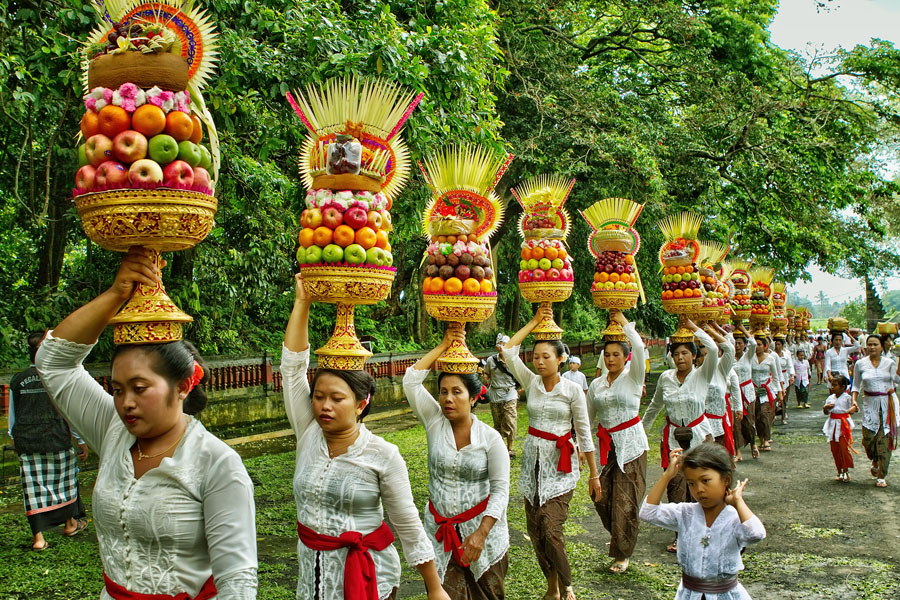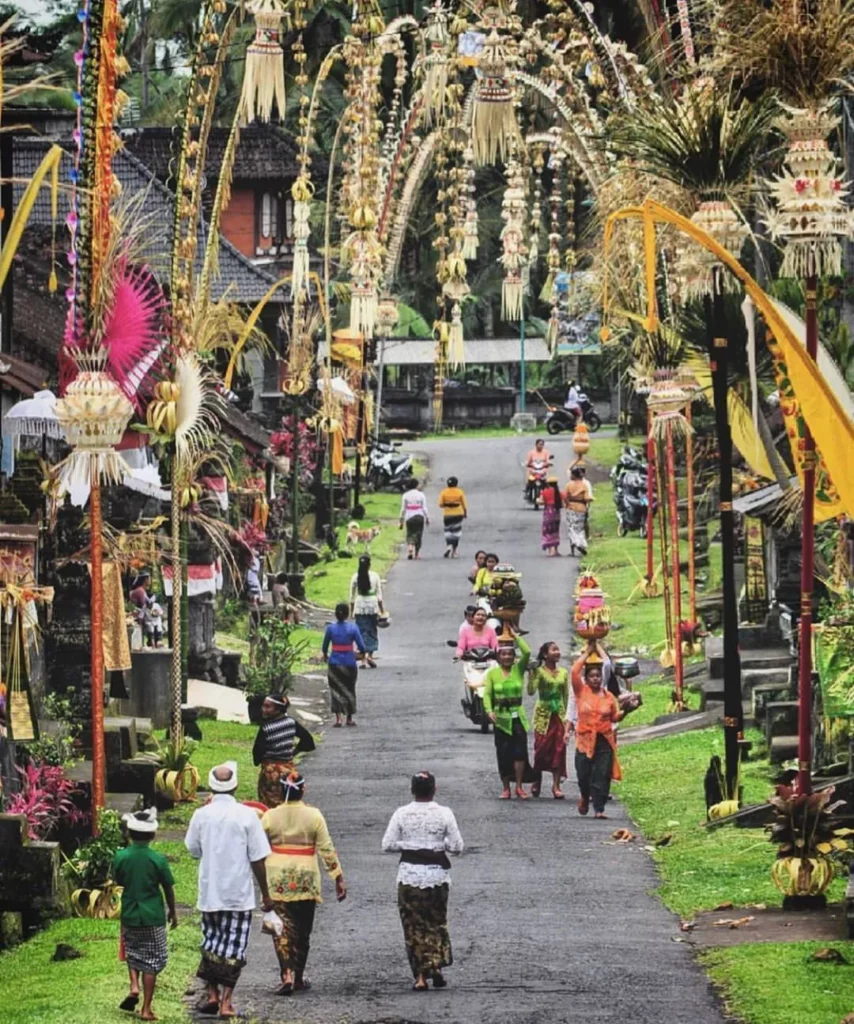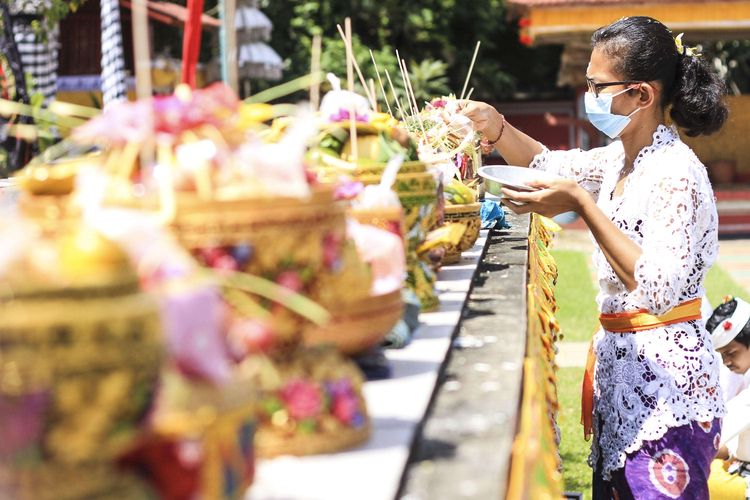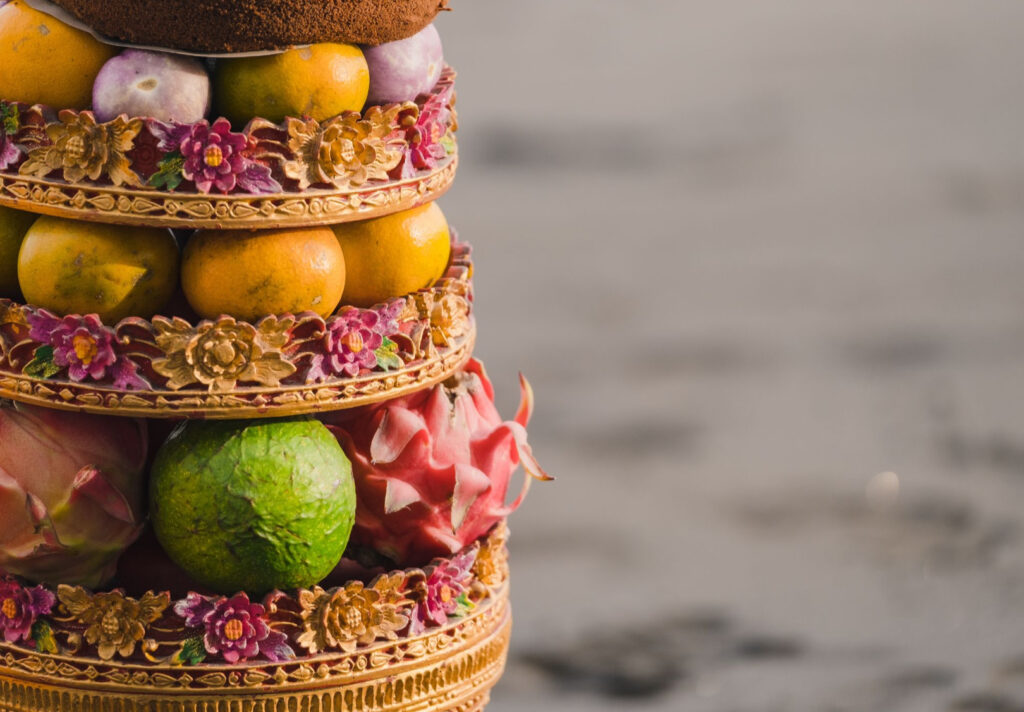Galungan Holiday Festival in Bali
Among its numerous festivals and ceremonies in Bali, the Galungan Festival stands out as a vibrant emblem of Balinese Hindu culture.
In this guide, as an expat who has embraced the Balinese way of life, I delve into the depths of the Galungan Festival, a celebration that captures the essence of the island’s spiritual heart and communal harmony.
Join me as we explore the traditions, rituals, and profound symbolism of Galungan, and discover how this festival is not just a holiday, but a living expression of Bali’s enduring spirit.
Bali, an island known for its vibrant culture and spiritual essence, celebrates numerous festivals, but Galungan holds a special place. As an expat living in Bali, I’ve experienced the profound spiritual and cultural significance of Galungan, a festival that epitomizes the Balinese Hindu tradition’s richness and depth.

What is Galungan?
Galungan is a Balinese Hindu festival marking the victory of dharma (good) over adharma (evil). Occurring every 210 days, it’s a time when the ancestral spirits visit the Earth. The festival lasts for ten days, leading up to Kuningan, another significant day when the spirits return to heaven.
The Significance and Mythology
The festival commemorates the legendary battle of Lord Indra’s defeat over the tyrant king Mayadenawa, symbolizing the triumph of good over evil. This event is deeply rooted in Balinese Hinduism, reflecting the eternal struggle between spiritual and materialistic aspects of life.
Preparations and Rituals
Preparations for Galungan begin long before the actual day. Balinese Hindus engage in extensive cleaning, offerings, and prayer. Penjor poles, a distinct feature of Galungan, adorn the streets. These bamboo poles, beautifully decorated with coconut leaves, fruits, and flowers, symbolize prosperity and are believed to attract ancestral spirits to the homes.

The Days of Celebration
The festivities start with ‘Penyekeban’, where families start to prepare fruits for offerings. It’s followed by ‘Penyajaan’, a time for making ‘jaja’ (colored cakes used in offerings). The day before Galungan, known as ‘Penampahan’, is dedicated to making offerings and slaughtering pigs for ceremonial feasts.
Galungan Day
The actual day of Galungan is a spectacle of devotion and joy. People visit temples and family homes, dressed in traditional attire, offering prayers and gifts. The air is filled with the fragrance of incense and the sounds of gamelan music. The communal feeling is strong, with everyone sharing food and stories, embodying the Balinese community spirit.
Kuningan: The Culmination
Kuningan, marking the end of the Galungan period, is equally significant. It’s believed that on this day, the ancestral spirits ascend back to heaven. The offerings on Kuningan are special, including a small yellow rice offering called ‘nasi kuning’, a symbol of gratitude.
Cultural Insights
As an expat, witnessing Galungan offers a profound understanding of Balinese culture. The commitment to tradition, community, and spirituality is deeply ingrained in everyday life. Galungan is not just a festival; it’s a living example of Bali’s spiritual heartbeat.

Celebrating Galungan as a Foreigner
Understanding and Respect
For foreigners in Bali during Galungan, the first step to celebrating is understanding and respecting the cultural and spiritual significance of the festival. It’s essential to approach it with an open heart and mind, recognizing that you are a guest in a deeply spiritual and traditional environment.
Participate in Preparations
Engaging in the preparations for Galungan is a wonderful way to immerse yourself in the culture. You can participate in community activities, such as helping to create the Penjor poles. This not only gives you a hands-on experience but also opens doors to building relationships with the locals.
Dress Appropriately
When participating in any festival in Bali, dressing appropriately is crucial. For Galungan, wearing traditional Balinese attire not only shows respect but also enhances your experience. You can rent or buy a sarong, sash, and a kebaya (for women) or a shirt (for men) from local markets.
Visit Temples
Visiting temples during Galungan offers a glimpse into the spiritual aspect of the festival. However, it’s important to follow temple etiquette: wear a sarong and sash, don’t enter during menstruation, and avoid using flash photography. Some temples may have specific rules for foreigners, so it’s wise to inquire beforehand.

Join the Feasts
Galungan is also about communal feasts and sharing. Joining a Balinese family or community for the feast is a great way to experience local life. Balinese people are generally very hospitable and may invite you to join in their celebrations.
Learn About the Rituals
Take the opportunity to learn about the rituals and meanings behind the offerings and prayers. Many Balinese will be happy to explain the significance of their traditions, which adds depth to your experience.
Contribute to the Community
If possible, contribute to the community by buying local products or donating to local causes. This not only supports the local economy but also helps you to connect more deeply with the community.
Photography and Social Media
While capturing memories is important, always ask for permission before taking photos, especially during religious ceremonies. Be mindful of what you share on social media, ensuring it portrays the festival and Balinese culture respectfully.

Galungan in Bali is more than a holiday; it’s a vibrant, deeply spiritual event reflecting the Balinese people’s values and beliefs. For expats and travelers, participating or observing Galungan provides a unique insight into Bali’s rich cultural tapestry, leaving an indelible mark on one’s understanding of this enchanting island.







